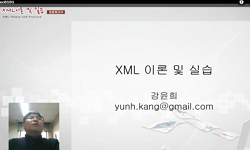This paper is about environment-based low-code and no-code execution platform and execution method that combines hybrid and native apps. In detail, this paper describes the Low-Code/No-Code execution structure that combines the advantages of hybrid an...
http://chineseinput.net/에서 pinyin(병음)방식으로 중국어를 변환할 수 있습니다.
변환된 중국어를 복사하여 사용하시면 됩니다.
- 中文 을 입력하시려면 zhongwen을 입력하시고 space를누르시면됩니다.
- 北京 을 입력하시려면 beijing을 입력하시고 space를 누르시면 됩니다.
부가정보
다국어 초록 (Multilingual Abstract)
The Low-Code /No-Code (LCNC) development platform is a visual integrated development environment that allows non-technical developers to drag and drop application components to develop mobile or web applications. It provides the functions to manage dependencies that are packaged into small modules such as widgets and dynamically loads when needed, to apply model-view-controller (MVC) pattern, and to handle document object model (DOM). In the Low-Code/No-Code system, the widget calls the AppOS API provided by the UCMS platform to deliver the necessary requests to AppOS. The AppOS API provides authentication/authorization, online to offline (O2O), commerce, messaging, social publishing, and vision. It includes providing the functionality of vision.
This paper is about environment-based low-code and no-code execution platform and execution method that combines hybrid and native apps. In detail, this paper describes the Low-Code/No-Code execution structure that combines the advantages of hybrid and native apps. It supports the iPhone and Android phones simultaneously, supports various templates, and avoids developer-oriented development methods based on the production process of coding-free apps and the produced apps play the role of Java virtual machine (VM).
The Low-Code /No-Code (LCNC) development platform is a visual integrated development environment that allows non-technical developers to drag and drop application components to develop mobile or web applications. It provides the functions to manage dependencies that are packaged into small modules such as widgets and dynamically loads when needed, to apply model-view-controller (MVC) pattern, and to handle document object model (DOM). In the Low-Code/No-Code system, the widget calls the AppOS API provided by the UCMS platform to deliver the necessary requests to AppOS. The AppOS API provides authentication/authorization, online to offline (O2O), commerce, messaging, social publishing, and vision. It includes providing the functionality of vision.
참고문헌 (Reference)
1 "https://www.forbes.com/sites/johneverhard/2019/01/15/what-really-is-low-codeno-code-evelopment/#3b9c2ada2a8e"
2 "https://searchsoftwarequality.techtarget.com/definition/low-code-no-code-development-platform"
3 "http://blog.naver.com/PostView.nhn?blogId=simon9627&logNo=221168371306"
4 이한성, "Simulated Dynamic C&C Server Based Activated Evidence Aggregation of Evasive Server-Side Polymorphic Mobile Malware on Android" 한국인터넷방송통신학회 6 (6): 1-8, 2017
5 최은수, "Implementation of IoT-based Automatic Inventory Management System" 국제문화기술진흥원 5 (5): 70-75, 2017
6 Jun Lee, "Design and Development of a Monitoring System based on Smart Device for Service Robot Applications" 한국인터넷방송통신학회 10 (10): 35-41, 2018
7 장영현, "A Study on the Public Data Activation Strategy based on App Developed by Non-Profession User" 한국인터넷방송통신학회 6 (6): 32-38, 2017
8 김희선, "A Study on Usability Improvement of Mobile Healthcare Services" 한국인터넷방송통신학회 6 (6): 72-81, 2017
9 이종수, "A Study on SNS Applications in Broadcasting Based on Analysis on KBS’ Reaches on Facebook" 한국인터넷방송통신학회 9 (9): 27-34, 2017
10 전우천, "A Study on Programming Ability Assessment Tool Development for the No-Programming Experienced" 한국인터넷방송통신학회 9 (9): 56-63, 2017
1 "https://www.forbes.com/sites/johneverhard/2019/01/15/what-really-is-low-codeno-code-evelopment/#3b9c2ada2a8e"
2 "https://searchsoftwarequality.techtarget.com/definition/low-code-no-code-development-platform"
3 "http://blog.naver.com/PostView.nhn?blogId=simon9627&logNo=221168371306"
4 이한성, "Simulated Dynamic C&C Server Based Activated Evidence Aggregation of Evasive Server-Side Polymorphic Mobile Malware on Android" 한국인터넷방송통신학회 6 (6): 1-8, 2017
5 최은수, "Implementation of IoT-based Automatic Inventory Management System" 국제문화기술진흥원 5 (5): 70-75, 2017
6 Jun Lee, "Design and Development of a Monitoring System based on Smart Device for Service Robot Applications" 한국인터넷방송통신학회 10 (10): 35-41, 2018
7 장영현, "A Study on the Public Data Activation Strategy based on App Developed by Non-Profession User" 한국인터넷방송통신학회 6 (6): 32-38, 2017
8 김희선, "A Study on Usability Improvement of Mobile Healthcare Services" 한국인터넷방송통신학회 6 (6): 72-81, 2017
9 이종수, "A Study on SNS Applications in Broadcasting Based on Analysis on KBS’ Reaches on Facebook" 한국인터넷방송통신학회 9 (9): 27-34, 2017
10 전우천, "A Study on Programming Ability Assessment Tool Development for the No-Programming Experienced" 한국인터넷방송통신학회 9 (9): 56-63, 2017
11 박종열, "A Study on Automatic Service Creation Method of Cloud-based Mobile Contents" 한국인터넷방송통신학회 10 (10): 19-24, 2018
동일학술지(권/호) 다른 논문
-
Robot-based Coding Education System with Step by Step Software Training
- 한국인터넷방송통신학회
- 이준
- 2019
- KCI등재
-
Forgery Detection Mechanism with Abnormal Structure Analysis on Office Open XML based MS-Word File
- 한국인터넷방송통신학회
- 이한성
- 2019
- KCI등재
-
- 한국인터넷방송통신학회
- 김정미
- 2019
- KCI등재
-
A Study on Emotional Information System Using User Color Information
- 한국인터넷방송통신학회
- 고혜경
- 2019
- KCI등재
분석정보
인용정보 인용지수 설명보기
학술지 이력
| 연월일 | 이력구분 | 이력상세 | 등재구분 |
|---|---|---|---|
| 2027 | 평가예정 | 재인증평가 신청대상 (재인증) | |
| 2021-01-01 | 평가 | 등재학술지 유지 (재인증) |  |
| 2018-01-01 | 평가 | 등재학술지 선정 (계속평가) |  |
| 2017-01-01 | 평가 | 등재후보학술지 유지 (계속평가) |  |
| 2015-01-01 | 평가 | 등재후보학술지 선정 (신규평가) |  |
| 2013-12-26 | 학회명변경 | 영문명 : The Institute of Webcasting, Internet and Telecommunication -> The Institute of Internet, Broadcasting and Communication | |
| 2010-06-21 | 학회명변경 | 한글명 : 한국인터넷방송통신TV학회 -> 한국인터넷방송통신학회영문명 : Institute Of Webcasting, Internet Television And Telecommunication -> The Institute of Webcasting, Internet and Telecommunication | |
| 2005-08-25 | 학회명변경 | 한글명 : 한국인터넷방송/TV학회 -> 한국인터넷방송통신TV학회영문명 : Institute Of Webcasting, Internet Television And Telecommunication -> Institute Of Webcasting, Internet Television And Telecommunication |
학술지 인용정보
| 기준연도 | WOS-KCI 통합IF(2년) | KCIF(2년) | KCIF(3년) |
|---|---|---|---|
| 2016 | 0 | 0 | 0 |
| KCIF(4년) | KCIF(5년) | 중심성지수(3년) | 즉시성지수 |
| 0 | 0 | 0 | 0.02 |




 KCI
KCI






